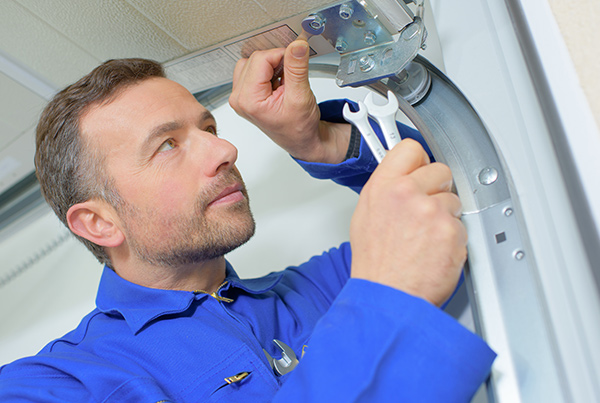Your garage is an important area in your home where you’ll find yourself frequently coming in and out of through your garage door. Because of this, it’s important to be aware of any issues your door might eventually come up with. Regular maintenance on your garage door will help keep it running smoothly, so here are some tips to keep it that way:
Check Door Functionality
Ideally, you’ll want your garage to move smoothly and quietly, so if it’s not, something could be wrong. The first step to identifying any noticeable issues with your garage door is to open/close your door. Start by opening it automatically, then manually. For each opening, look for any jerky movements, and listen for any unusual sounds. While manually opening the door, check to see if there’s any mechanical struggle or if it takes more effort than usual to open.
Test Safety Features
Make sure your garage door’s safety features are functioning properly while doing a maintenance inspection. Your door is equipped with a photoelectric sensor and an auto-reverse function. Test the sensor by waving an object like a broom while the door is automatically closing. The door will stop and reverse if it senses something in its path. Then test the auto-reverse by placing a sturdy object like a brick or wood plank under the door and close it. The door should automatically reverse when touching the object. If any of these features fail, call a technician.
Inspect Cables
Damaged cables add extra tension to certain areas of your door, leaving your door unbalanced, looking crooked, and lifting strangely. If there is damage to your cables, call a technician as soon as possible, as this is a safety hazard. Do not attempt to tamper with the garage door cables, as they’re under high tension and can be very dangerous. Do not use your garage door while the cables are damaged.
Check For Any Imbalance
An imbalance in your garage door puts strain on the other components, causing costly damage to your door over time. To see if your door is balanced, start by closing your door completely, then disconnect the opener by pulling the release handle (usually a red cord). After disconnecting, manually lift your door until it is halfway open and let go. If your door is balanced, it will stay in this position. Otherwise, you may have an issue with the springs or cables. If so, call a technician for assistance as soon as possible, and avoid using your garage door until repaired.
Lubricate Moving Parts
If your garage door is lifting slower than usual, you may need to lubricate certain parts. Over time, the moving parts of your door dry out, which creates friction, causing your door to lift slowly. Fortunately, lubricating is a simple task, and can leave your door operating smoothly for many years to come. Make sure to use garage-door-specific lubricant for parts such as the hinges, rollers, springs, tracks, and opener’s chain. Nylon rollers will not require lubrication, but parts that are steel or other material will need re-lubrication about every two years (or sooner if your door is used frequently).
Inspect Rollers
Garage door rollers guide the door along the tracks, allowing it to operate smoothly. Check for any chips or cracks on the rollers and replace any damaged ones that are not directly attached to any cable systems. Make sure the tracks are clear of debris so the rollers can roll properly.
Clean Tracks
A simple way to keep your garage door running smoothly is to make sure the tracks the door rolls on are clear of any dust or debris. Dust off any debris along the tracks, and then finish cleaning by wiping off the more stubborn dirt and grime with a damp cloth. Although you can clean the tracks yourself, any significant repairs or adjustments should be corrected by a technician.
Tighten Hardware
Using your garage door creates vibration, which over time loosens the nuts and bolts holding the parts together. If you use your door frequently, make sure to keep track of loose hardware. Tighten any loose nuts, bolts, and roller brackets with a socket wrench and/or screwdriver. Make sure not to overtighten the hardware, as you can cause damage to the components. Do not tighten any red-painted hardware or hardware on the bottom roller fixture, as doing so could compromise door safety or cause further damage. Leave these areas to the professionals.
Check Weatherstripping
Maintaining your weatherstripping is important when living in a rainy area. Weatherstripping is the rubber seal you’ll find at the bottom of your garage door, which helps protect from water damage, temperature fluctuations, and other elements from entering your garage’s interior. You’ll need to replace your weatherstripping if it becomes cracked or brittle. It’s also important to keep track of your weatherstripping during season changes.
Clean Your Garage Door
If all is good with your garage door, you’ll lastly want to check your door for wear and tear, as your door is constantly exposed to the elements. Steel doors may develop rust over time, which requires sanding and repainting. Wood doors may warp when exposed to water damage, and also require regular painting or staining in order to protect the wood. Finally, you’ll want your garage door looking good, so clean both sides of your door with a wet cloth and mild soap to remove any debris.
Let Us Maintain Garage Door For You
Overall, keeping track of your garage door’s health is important for maintaining proper function and can save you from costly repairs. Although there are some things you can repair or adjust yourself, you’ll want to call a proper technician to help save your door. Luckily at Garage Doors R Us of Orlando, we’re here to help if you’re experiencing any issues with your garage door!
